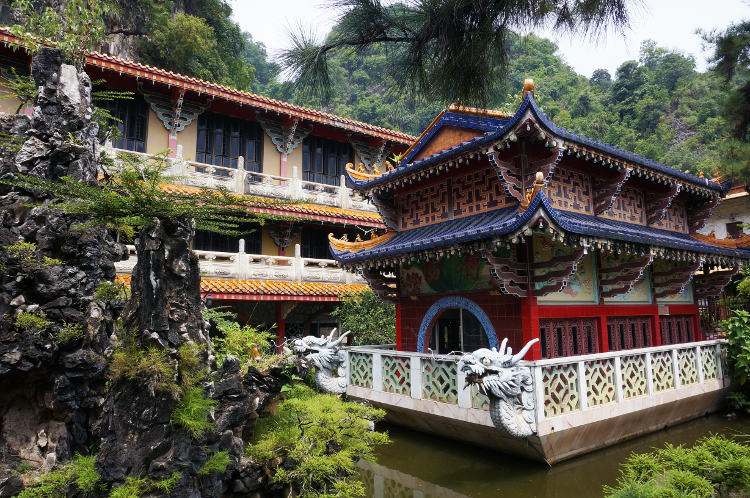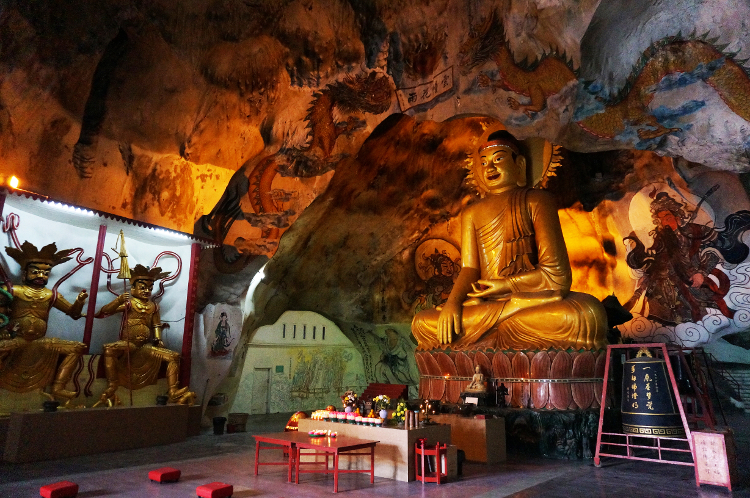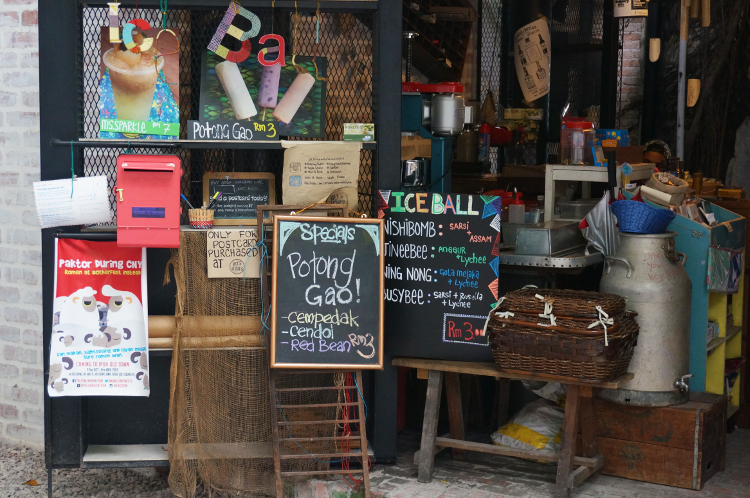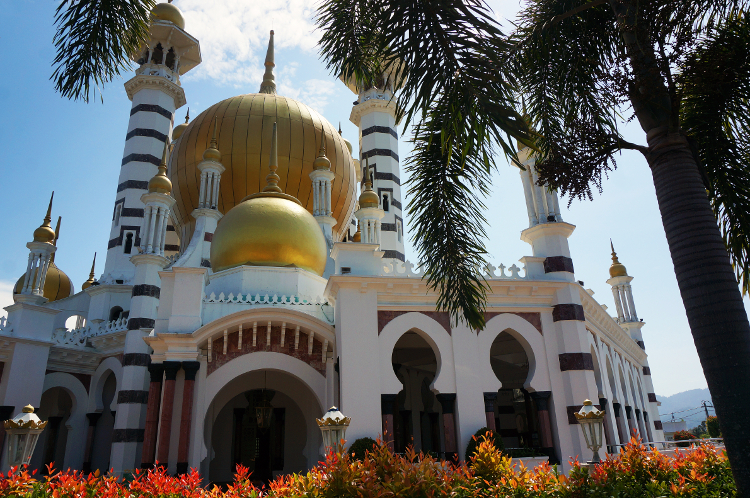Perak is located right between travel heavyweights Kuala Lumpur, Malaysia’s capital, and the street food hub Penang. Many travellers zoom between the two, unaware that they’re skipping a worthy detour. But these 15 fascinating sights should put Perak firmly on your travel wishlist.

Over the last century, the cliffs surrounding Perak’s main city, Ipoh, drew spiritual seekers. Several of the isolated retreats eventually developed into labyrinthine temple complexes, among them the spectacular Sam Poh Tong. This temple, 5km south of Ipoh, has stunning grottoes and shrines, a pond brimming with karma-restoring tortoises, plus an ornamental garden.
Choose your own adventure at Gua Tempurung, whose five huge domes formed around 10,000 years ago. Wet and wild thrill seekers can opt for a 3.5-hour odyssey through waterways and muddy pools, while risk-averse explorers can take wooden boardwalks for an easy 40-minute stroll. The cave is 45 minutes by bus or car from Ipoh (or even easier to reach if you’re staying in budding outdoor destination Gopeng).

The ascent to Perak Tong will make your calf muscles scream. But it’s worth every ache (and swatted mosquito) to see this scarlet temple, 6km north of Ipoh, and the panoramic views from its highest point. Founded in 1926, Perak Tong has since grown into a large complex with impressive burnished Buddha statues and shrines swirling with incense.
British planter William Kellie Smith commissioned this Scottish-Moorish architectural mash-up, and insisted on hauling building materials all the way from India. Construction of Kellie’s Castle battled on in spite of a mystery illness that ravaged Kellie’s workforce. The man himself died before he could enjoy the castle: perhaps that’s the reason his ghost is said to linger here.

The city of Ipoh is an architectural feast, with colonial-era British styles mingling with old Chinese shopfronts and grand modern mosques. Many of the faded heritage buildings have found a new lease of life, like the trendy Kong Heng Block (Jln Bandar Timah), home not only to the one-of-a-kind Sekeping Kong Heng boutique hotel, but a slew of craft shops. Sashay over to enjoy vintage shopping, slurp an ice ball (Ipoh’s most refreshing snack) and gulp superb coffee.
Speaking of coffee, Ipoh’s main claim to foodie fame is its invention of kopi putih (literally, ‘white coffee’). This brewing style produces a sweet, nourishing coffee, and you can sip it at the source in Ipoh’s Sin Yoon Loong (15 Jln Bandar Timah). For something more filling, sample Ipoh’s signature dish ayam tauge, poached chicken with beansprouts. Another favourite is Ipoh-style chee cheong fun (flat rice noodle rolls), best served ‘wet’ with soy and chilli sauce, fried onions and a sprinkling of sesame.

The town of Kuala Kangsar seems unastonishing at first glance. But southeast of its busy centre you’ll find gleaming architecture befitting this royal capital. Masjid Ubudiah might be small, but its gold dome and white marble (restored to their former lustre in 2003) are bright enough to make you reach for sunglasses.
A short distance from Masjid Ubudiah stands the yellow-and-black thatch of Istana Kenangan. These former royal quarters and mausoleum were built in 1926 without using a single nail. Today the wood and bamboo walls, carved with lacy geometric designs, enclose a museum of royal history.

You came all the way to Malaysia, so you deserve a little beach time. Pulau Pangkor, a few minutes by ferry from coastal town Lumut, is a favourite with local holidaymakers. The azure waters of Coral Beach aren’t the only draw; the thick jungle interior, home to hornbills and monkeys, is gradually attracting ecotourists to this wild isle.
Back when the glimmer of Perak tin caught Europe’s eye, strategically positioned Pangkor Island played a role in tussles to control this lucrative trade. The Dutch built a fort – Kota Belanda – in Teluk Gedong village in the island’s southeast, though it was soon sacked. Rebuilt 70 years later, the fort was eventually abandoned when the warrior chiefs finally fended off the Dutch for good. After a period of succumbing to nature, the ruin (now with a decorative lawn) has been preserved for posterity.

Perak is an excellent gateway to the fragrant, cool Cameron Highlands, just east of the border to Pahang state. But Perak has its own high-altitude retreat in Bukit Larut (1036m), Malaysia’s oldest hill station. Unlike the popular Cameron Highlands, you’ll find no souvenir teas and fridge magnets here, only tranquil lanes and a tangle of hiking trails. Government-regulated 4WDs that lurch up the zigzagging road are the only way to reach Bukit Larut (RM6 return).
Get way off the beaten track in ramshackle Batu Gajah. This untouristed Perak town enjoyed a heyday during Perak’s tin mining boom. Consequently the town is chock full of colonial architecture, with mansions, a neoclassical Court House, buttercup-yellow St Joseph’s Church, plus an old gaol, all dating to the late 19th century.
Indulge your inner architect with a walking tour through Taiping. Under British influence, schools and rest houses sprang up across this northern Perak town. Today they mingle with faded Peranakan mansions, a pint-sized Little India and an unusual, hexagon-shaped mosque.
Teeming jungles and trekking trails make Taman Negara a deserved favourite for travellers in Peninsular Malaysia. For a more primeval experience, Perak’s northeast corner is home to Royal Belum State Park. This dam-flooded forest requires exploration by boat. The reward for sloshing around in a longboat is the chance to see the world’s largest flower (rafflesia), as well as to access enchanting jungle hikes and (if you’re very lucky) catch glimpses of wild tapir and tigers.
Fragrant, green Gunung Lang (Jln Tunku Abdul Rahman) is a recreational park just 14km north of Ipoh. Locals visit this quiet spot to glide across the lake by boat (RM3), picnic in flower gardens and frolic in the water. It’s the ideal place to wind down from your Perak sightseeing whirlwind – or plan your next itinerary.